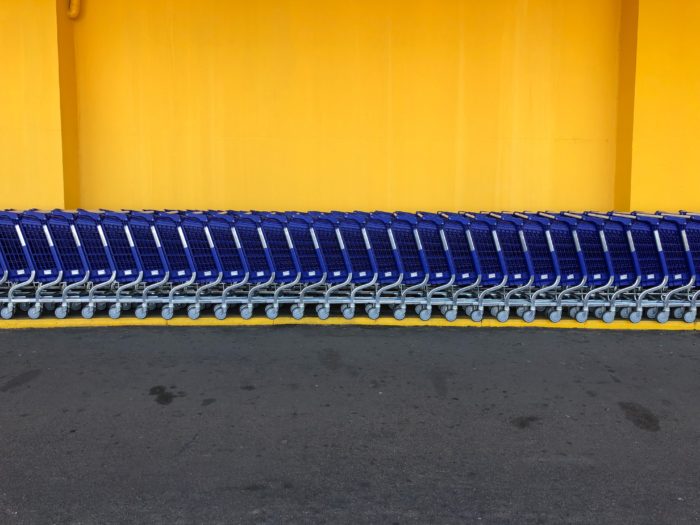Control is incredibly important for retail brands. You need to control your brand image, your products, your resale channels, and much more. Loss of control at any point along the path from product inception to the customers’ hands can hurt your brand’s reputation, your sales, and your profits.
That’s why unauthorized sellers are a problem for online brands. These sellers aren’t part of any formal reseller agreement, which means they’re selling your products without your permission. As a result, they have little incentive to follow your rules and support your brand.
However, not all unauthorized sellers are against you. Sometimes, there could be more at work than what meets the eye. To explain, let’s look at three types of unauthorized sellers and how you can convert them into an authorized partner—or stop them from selling your brand in the future.
Unauthorized Seller No. 1: Counterfeiters or Crooks
First up is a type of unauthorized seller who you definitely do not want as an authorized partner: the counterfeiter or crook.
These unauthorized sellers are either selling a knock-off version of your brand or have acquired your legitimate merchandise through illegal means, including theft. They’re advertising these products online as the real deal, often at a discount compared to your actual resellers, and the problem is that consumers may not be able to spot the difference before buying.
It’s important to remember that not all these sellers are knowingly selling counterfeit or stolen goods. They may have trusted the wrong distributor or be new to retail and unable to spot the real thing from a fake.

Unauthorized Seller No. 2: Individual Resellers
Next is a smaller type of retailer who isn’t as harmful as a counterfeiter but can still give you some headaches if you’re not careful: the individual reseller.
Who are these sellers? They’re individual people or small businesses who make their money buying products from larger retailers and then reselling them online, typically on Amazon or eBay. They may hunt for brick-and-mortar deals, like clearance items, and then list those products at a mark-up online to make a profit. Or, they’ve received your product as a gift and decided to resell it.
In this case, these unauthorized sellers are selling the real deal, which is good for your consumers. However, they’re not following your pricing policies and they’re taking business away from your legitimate partners.

Unauthorized Seller No. 3: Liquidators
Third is the liquidator. Liquidation is a big business in retail, and some are even dedicated retailers whose entire business model is built around selling liquidated merchandise at a discount.
Even so, liquidators can be unauthorized sellers in relation to your brand and can bring some of the same aches and pains that the previous sellers have. In this case, they’ve typically acquired your products via an authorized seller that is going out of business. Then, they’re relisting your merchandise online at—most likely—prices well below those of your authorized sellers.

How to Convert Unauthorized Sellers
Understandably, you don’t want unauthorized sellers listing products below MAP, taking sales away from your legitimate retail partners, or tricking consumers into thinking a low-quality knock-off is the real deal.
Depending on which type of unauthorized seller they are, you can convert them into authorized sellers or stop them from selling your brand altogether.
Here is what you can do:
1. Identify the Seller
First comes identification. Review online marketplaces for your product listings and highlight any that seem out of place for further review. MAP pricing policies and MAP monitoring are great ways to do this, as counterfeiters will not be following your MAP policy. Any of your products priced below MAP warrant a closer look. Then search for contact information of the seller so you can connect. You may also leverage a third-party investigator to identify sellers if their information is hard to come by.
2. Address the Distribution Method
You can figure out where they get your merchandise once you know who they are. Sources could be a weak point in your existing supply chain, theft, counterfeiting, or some other method that requires legal action to prevent. Then, identify the distributor and stop products from reaching the unauthorized seller in question.
3. Contact the Unauthorized Seller
Then, you can use the seller information you acquired to reach out to the seller. If they’re a counterfeiter—or worse—you will likely want to consult with your legal team and send a cease and desist letter. If they’re unaware of the issue, you may want to send an email and take less drastic action. In some cases, the seller may be a legitimate retailer and open to becoming an authorized partner.
4. Review and Revise
Last, you will want to review your actions and revise any methods as needed. Depending on the legality and severity of any actions, you may not have received a response from the unauthorized seller. Then, you’ll want to go back to your legal team and consider further legal enforcement. You may also have received a response and could fold a seller into your authorized partner program. See what worked, what didn’t, and plan accordingly for future sellers.
No matter what, don’t let unauthorized sellers deter you from selling your brand online. Brand protection takes many forms, and identifying, preventing, or converting unauthorized sellers is one of the key parts of any strategy.
Remember to monitor your online brand presence for red flags and act as needed to take control of your brand. Sometimes, that unauthorized seller is simply unaware of your pricing policies and distribution channels. Cluing them into what’s going on can create an opportunity to convert an unauthorized seller into an authorized partner and better protect your brand online.














